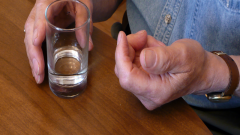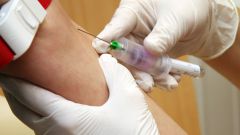Instruction
1
Chlamydia in women is manifested mainly asymptomatic. Approximately 30 percent may appear purulent-mucous discharge from the vagina. Pay attention to it. They differ from the usual normal secretions of yellowish color and an unpleasant odor. May experience vague pain in the area of internal and external genitalia, the lower abdomen. Also, the pain before menstruation. Sometimes there are intermenstrual bleeding. A woman may feel itching and burning in the genitals. Is a slight fever and General weakness, fatigue. However, these signs do not give a clear picture to determine if you're sick with chlamydia or not, only during tests.
2
As in women, symptoms of chlamydia in men are feebly marked or absent altogether. In the beginning of the disease may be a slight inflammation of the urethra. Note to see if you have vitreous discharge. Perhaps you feel the burning and itching. Sometimes there is pain in the scrotum, testicles and lower back. There may be clouding of urine. Slightly increased temperature, but usually not above 37 degrees. Similar symptoms may appear only after 3-4 weeks after infection, and this is largely depends on immune status. When tightening the treatment of chlamydia can lead to infertility and male impotence.
3
For chlamydia inflammatory process also affects other organs. For example, when the homosexual contacts may occur chlamydial proctitis. Symptoms are itching and pain in the rectum. In contact with chlamydia in the eye you will notice mucous or purulent scant selection. It is also possible photophobia, and recurrent conjunctivitis. Note, however, that even without treatment, symptoms of chlamydia of the eye and rectum will disappear completely in a couple weeks. And then chlamydia go into chronic form, gradually affecting the internal organs.
4
In order not to expose themselves to unnecessary risk, please contact us with a request to get tested for chlamydia with the ever-recurrent colds, inflammatory genital diseases and conjunctivitis.




